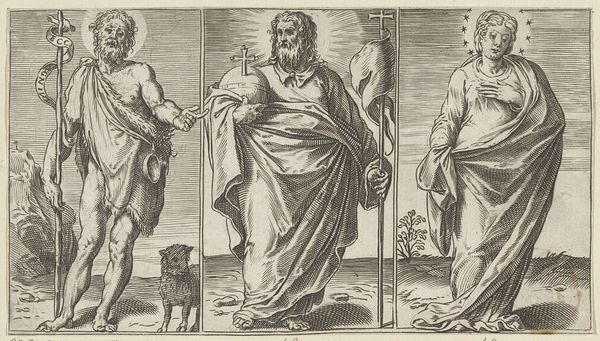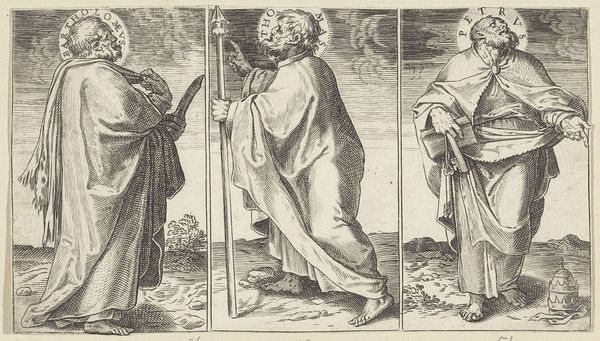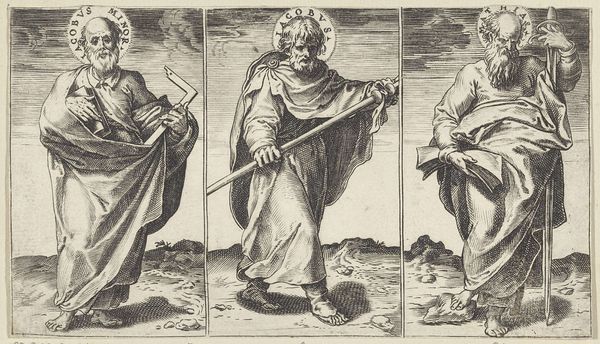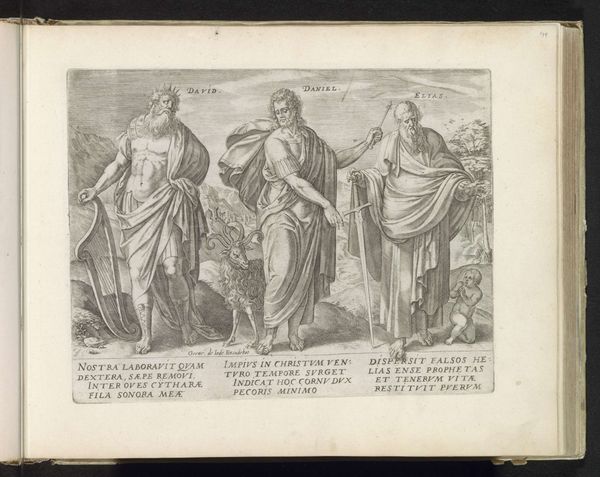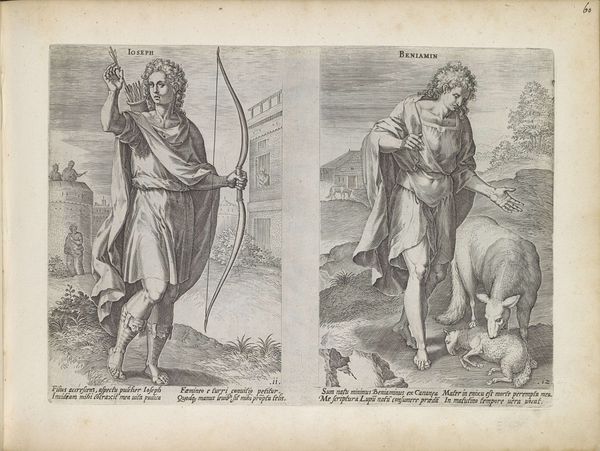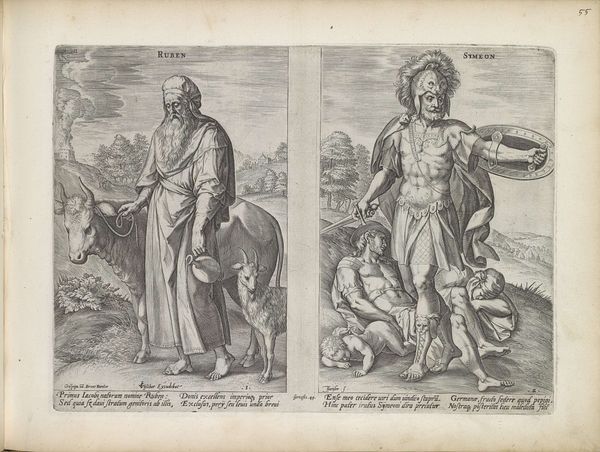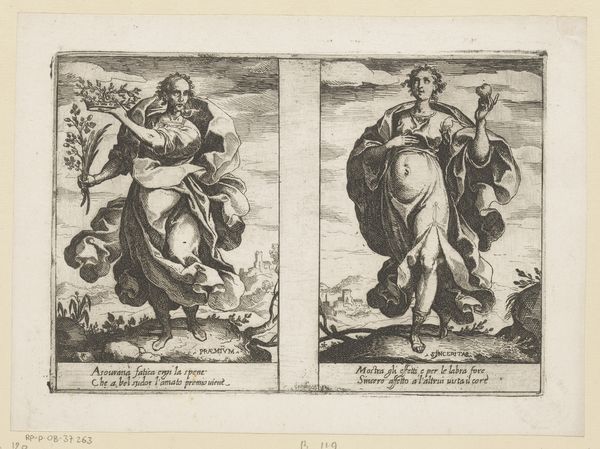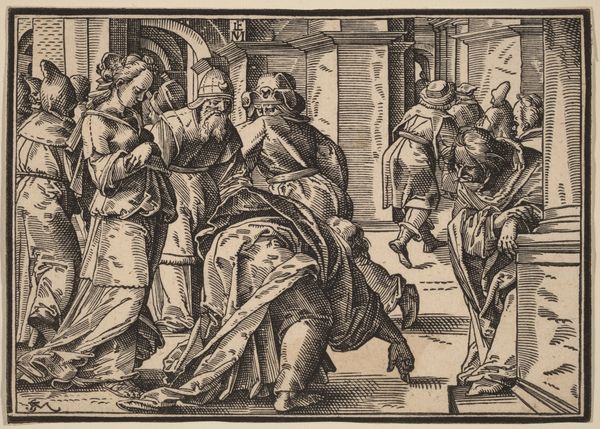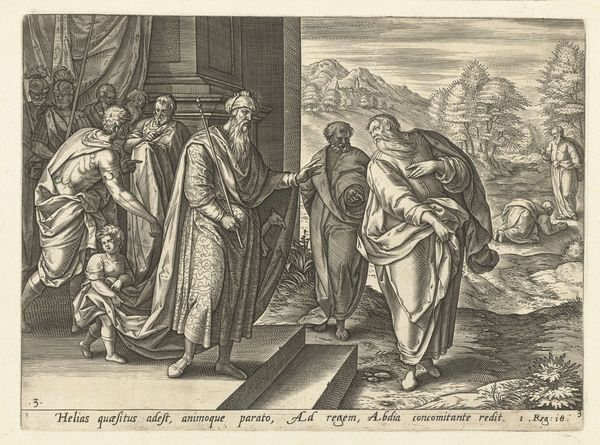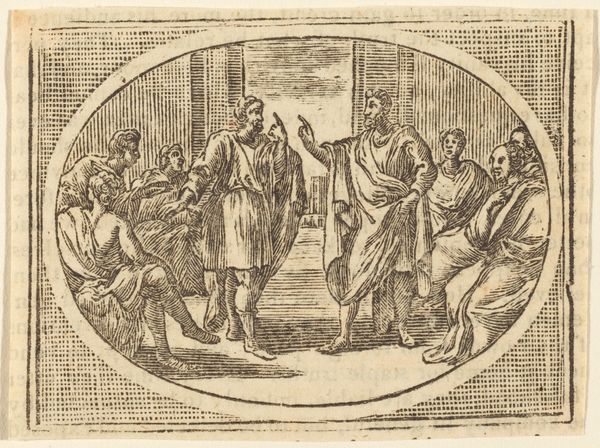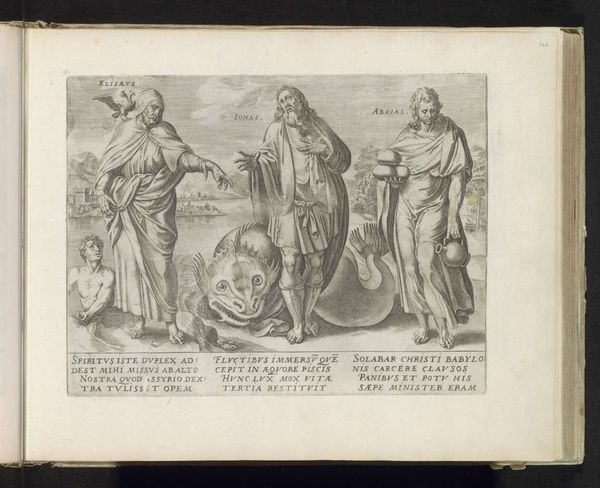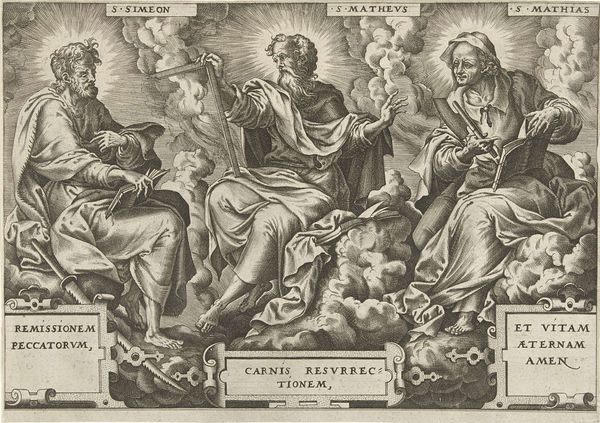
Dimensions: height 110 mm, width 195 mm
Copyright: Rijks Museum: Open Domain
Curator: Here we have Agostino Carracci's 1583 engraving, "Simon, Filippus en Judas Taddeüs," a striking example of late 16th-century printmaking. Editor: The texture! I’m immediately struck by the texture achieved solely through line work. The way the fabric folds on their robes is almost tactile. Curator: Absolutely. Look closely at Carracci’s mastery of the engraving technique. Notice the varying densities of lines used to create shadow and volume. Editor: The tooling marks become quite present here, not as much in a refined and subtle manner but clearly displayed like raw production cuts to form an appealing finish. Did the choice to print influence this process at all? Curator: The print was obviously produced to be sold or distributed. It speaks to the burgeoning market for religious imagery at the time and popular Baroque styles that were coming into the art culture, meeting devotional needs on a larger scale as well as being more cost-effective with their means of production. It wasn't about just the refined product as an isolated instance. Editor: Yes! I agree that this choice reflects production capacities and the way labor would function in the artistic setting. What were Carracci’s intentions? What are we supposed to get out of the symbolic ax in the first figure? What about the halos? What did this engraving meant to a worshiper in the late 1500s? Curator: As devotional works they provide the community with guidance through divine intervention but perhaps also Carracci as a merchant artist aimed to offer this as an accessible form of worship beyond high art institutions such as commissioned artwork inside cathedrals. Editor: Right! Looking at Carracci’s detailed linear work here provides not just artistic engagement, but reminds me that material conditions can shape devotion. It is much more of a collective religious moment for society to share with cheaper materials and reproduction strategies! Curator: A fitting testament, don’t you think, to how examining an artist’s decisions related to production context expands the dialogue in terms of access and broader cultural impacts, as a shift in materials has revolutionized art consumption as a whole? Editor: Indeed. Analyzing Carracci's engraving has not only shown a visually interesting texture of an image, but how religious sentiments get reshaped at the societal level, influenced by both artistic talent and new accessible labor practices.
Comments
No comments
Be the first to comment and join the conversation on the ultimate creative platform.
